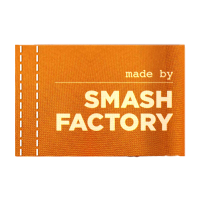Jerry sits at his kitchen table. The top is covered in electrodes, glue guns and parts.
His head cupped in his hands; he sobs quiet.
Jerry is your average inventor with a great idea. An electronic crib monitor in the shape of a glowing teddy bear. The glow was soothing and allowed new parents to quickly see their new born.
Jerry sketched his idea out, sought a patent and hired a manufacturing company from Alibaba to make his product.
The manufacturing company sold Jerry on the fact that they could do everything in-house from his product design, prototypes and manufacturing.
His costs of goods were $45 landed in Houston. Jerry and his wife priced the product at $80 because that was the price of competitive products in that category.
They made his sales prototypes for a cheap $1500 with the assurance they could produce the first 100 orders – their requested minimum.
Jerry recruited some buddies and created a video showing off his new invention. It was pretty damn slick for a bunch of beginners and they had a lot of fun in the process.
Jerry launched a Kickstarter campaign offering his product as the reward for $80. For $145, you could get two products and a stuffed teddy bear signed by Jerry and his wife.
In conjunction they launched a website to take orders. Jerry used a local website company do design and develop the website and a logo.
The Kickstarter campaign was a huge success. Blowing his original request of $10,000 out of the water by receiving another $7,000!
That’s when Jerry learned some hard lessons.
His patent attorney wanted more money than the original $5000 for following up with the requests from the Patent Office – $2500 more!
The website company was taking much longer than expected to create the shopping cart. They couldn’t get the payment system from his bank to work with the checkout features.
And last but not least, When Jerry tried to place the first order to fulfill his orders, the manufacturing company now priced the products at $85 each AND he had to order a minimum of 500.
He will lose $5 for every sale!
To bail himself out, Jerry put up an ebay store and offered the monitors for $125 each intending to make up the difference to fulfill the Kickstarter orders later.
It spiraled downward and you can imagine what drove Jerry to this point.
Well, you don’t have to imagine because, even though this story is made up, it is actually happening right this moment to hundreds of Kickstarter and IndieGoGo users. [read a story here.] [and one here.] [and another here.]
How to avoid the sharks
I’m not against crowdfunding; in fact, I’m a huge fan. It’s liberated access to product development for thousands of inventors who would never have been able to launch before.
However, not understanding the details of successfully getting a product through the development phases and having exact numbers and details at every phase is kicking the shit out of would-be entrepreneurs every day.
These are good people with good intentions that may not ever recover from the financial loss or discouraging brain fuck this causes.
And, it doesn’t just happen to the Jerry’s of the world. There are some very successful entrepreneurs getting hammered.
I recently consulted with a company that had a HUGE business in the personal hygiene niche. They’re concept is a really cool product in an unrelated category. Every detail I described above is what happened to them.
The manufacturing company in China was holding their CAD drawings and product molds hostage. They wanted an absurd amount to complete the manufacturing.
I’m not saying this is a China problem. I’ve used several Chinese manufacturers over the years with great success. This can happen with a manufacturer anywhere.
I’m saying that by not following and understanding the different processes in product development and distribution, you are at high risk for problems.
Luckily, many of these set-backs can be remedied with the right influences.
I pointed my friends to a company that I’ve used over the years who have a lot of influence in China. They were able to negotiate a deal and salvage the deal.
They produced the original Kickstarter orders just below their sales price. They didn’t make any money on the first run, but didn’t loose any either. They will make up for the losses on future orders.
TIPS:
- Make sure to get several competing bids from various manufacturers.
- Also contact past customers for references.
- Get the contracts in writing and understand all the fine print.
- Use a reputable patent attorney (if you can find one…) who also agrees to complete the ENTIRE patent application for a flat fee.
- Utilize the best ecommerce shopping platforms such as Shopify or Big Commerce who also have a large support network of approved developers.
- Do the numbers! You need to know your financials inside and out.
Robo Out.
Article Level: Beginning Guides for Inventors
Article Strength: 4
Article Category: Inventor, How-To, Product Development
